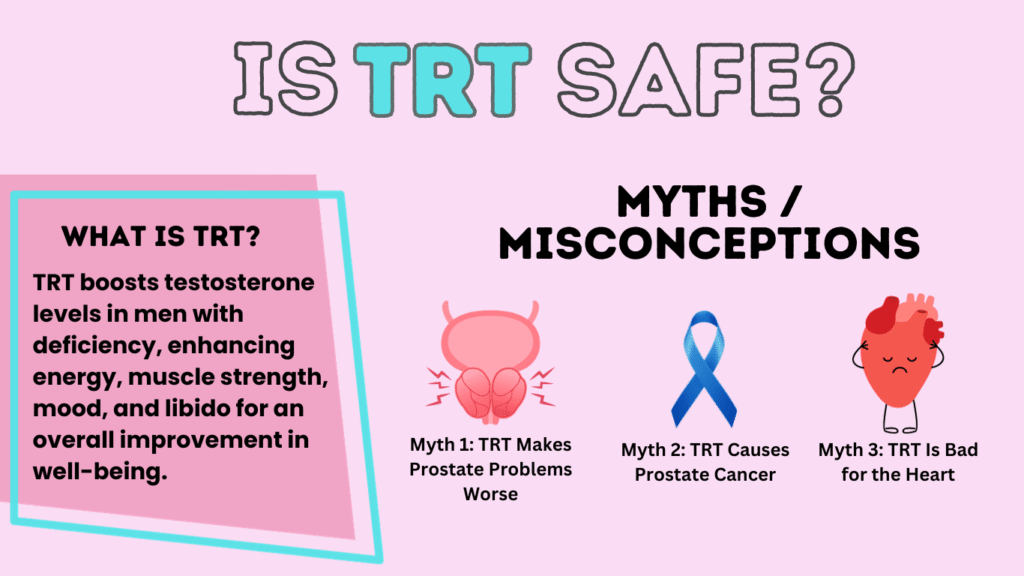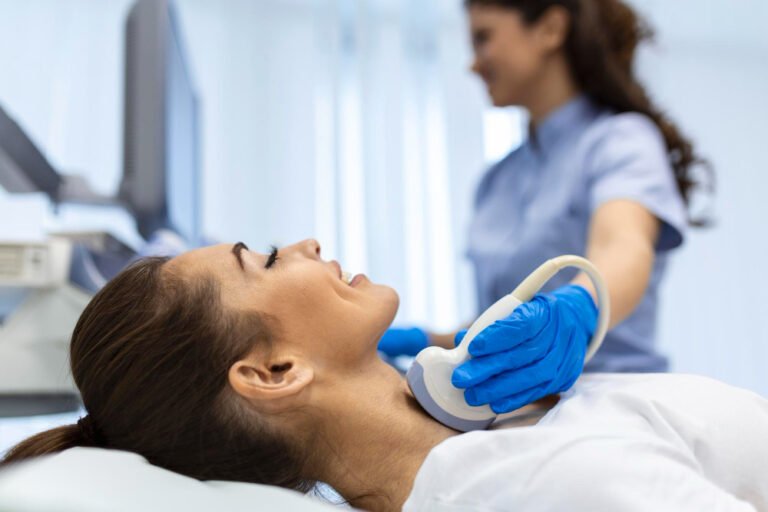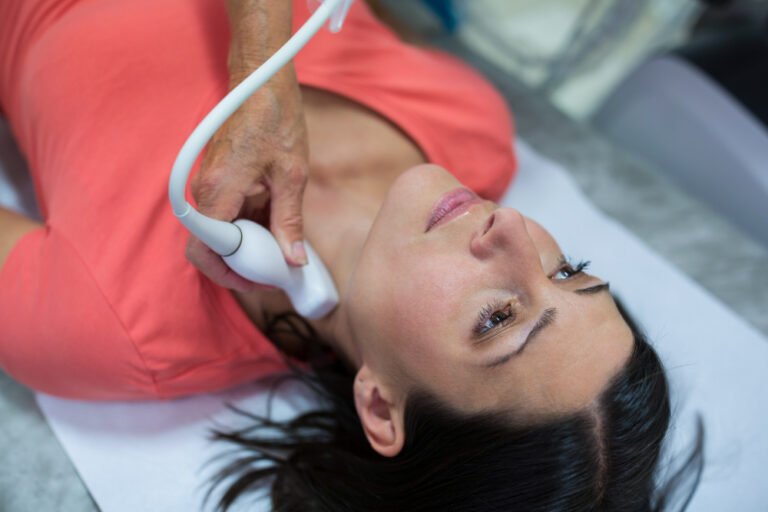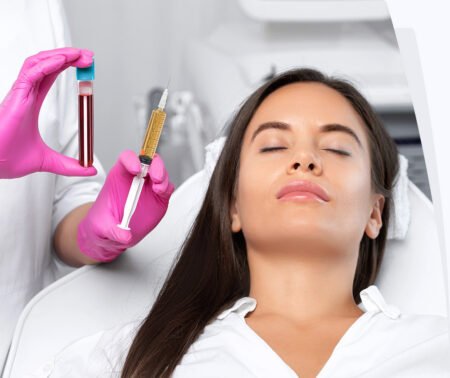Testosterone Replacement Therapy (TRT) has helped many men regain energy, muscle strength, libido, and emotional balance. But like any medical treatment, TRT comes with potential risks and side effects. While many men tolerate testosterone therapy well under medical supervision, it’s essential to be fully informed before starting treatment.
This guide provides a transparent look at the most common short-term and long-term side effects of TRT, along with guidance on how to manage them safely.
⚠️ Why Side Effects Occur
Testosterone is a powerful hormone that influences many systems in the body. When introduced externally (via injections, gels, patches, etc.), it can cause hormonal shifts, affect blood chemistry, and interact with other conditions or medications.
Monitoring and medical oversight are crucial to avoid or minimize complications.
🔄 Common Side Effects of TRT
1. Acne and Oily Skin
Increased testosterone stimulates the sebaceous (oil) glands, which can lead to breakouts, especially on the face, chest, or back.
How to manage it:
- Use a gentle exfoliating cleanser
- Avoid heavy moisturizers and comedogenic products
- In some cases, topical acne treatments or antibiotics may be prescribed
2. Fluid Retention (Mild Edema)
Some men notice swelling in the ankles, feet, or hands, especially during the first few weeks of therapy.
How to manage it:
- Monitor salt intake
- Stay hydrated and active
- Your doctor may adjust your dose if swelling is persistent
3. Increased Red Blood Cell Count (Polycythemia)
TRT can stimulate red blood cell production, which may raise hematocrit and hemoglobin levels. While mild increases are usually harmless, excessive levels can thicken the blood, increasing the risk of blood clots, strokes, or heart attacks.
How to manage it:
- Routine blood tests (every 3–6 months)
- Therapeutic phlebotomy (blood donation)
- Dose adjustments if levels get too high
4. Sleep Apnea Worsening
Men with undiagnosed or borderline sleep apnea may notice worsening symptoms due to TRT’s effects on respiratory control during sleep.
How to manage it:
- Get a sleep study before or during treatment
- Use a CPAP machine if diagnosed
- Consider dose modification if symptoms worsen
5. Mood Changes or Irritability
While TRT can improve mood in men with low testosterone, some experience increased irritability, aggression, or mood swings—particularly if dosing is too high.
How to manage it:
- Regular follow-up with your provider
- Use the lowest effective dose
- Keep a symptom journal to track emotional changes
6. Breast Tenderness or Enlargement (Gynecomastia)
Elevated testosterone levels can be converted into estrogen by the enzyme aromatase, which may cause breast tissue development in some men.
How to manage it:
- Aromatase inhibitors (e.g., anastrozole) may be prescribed
- Dose modification
- Rare cases may require surgery
7. Testicular Shrinkage and Decreased Fertility
External testosterone suppresses natural production by signaling the brain to stop stimulating the testes, leading to reduced sperm production and testicular atrophy.
How to manage it:
- Men wishing to preserve fertility should avoid TRT or consider clomiphene citrate or HCG (human chorionic gonadotropin) alongside TRT
- Discuss fertility preservation options before beginning therapy
8. Injection Site Reactions (if applicable)
Men using injectable testosterone may experience:
- Pain
- Swelling
- Redness or itching at the injection site
How to manage it:
- Rotate injection sites regularly
- Use proper sterile technique
- Consult your provider if symptoms worsen
🫀 Potential Cardiovascular Risks
The Debate:
Some studies have suggested that TRT may increase the risk of heart attack, stroke, or blood clots, particularly in older men or those with pre-existing heart conditions. Other research suggests no increased risk—or even potential cardiovascular benefits—when testosterone is kept within normal physiologic ranges.
How to manage it:
- Screen for cardiovascular risk factors before starting TRT
- Monitor blood pressure, cholesterol, and hematocrit regularly
- Avoid supraphysiological dosing (testosterone levels that are too high)
🧬 Prostate Health Concerns
Does TRT Cause Prostate Cancer?
There is no definitive evidence that TRT causes prostate cancer. However, it may stimulate growth of existing prostate cancer, which is why screening is crucial before and during therapy.
How to manage it:
- Baseline and annual prostate exams (DRE)
- Regular PSA (prostate-specific antigen) testing
- Avoid TRT in men with known or suspected prostate cancer unless cleared by a urologist
🧠 Long-Term Considerations
Liver Health
Most modern TRT methods do not harm the liver, but oral testosterone (particularly older versions) can strain liver function.
Tip: Use non-oral methods unless specifically recommended.
Hormonal Dependency
Over time, your body may reduce or shut down its own testosterone production. TRT is often a lifelong commitment, especially after long-term use.
Important: Have a clear plan with your provider regarding duration and monitoring.
✅ Staying Safe with TRT: How to Minimize Risks
- Get Proper Diagnosis
Only start TRT if you have lab-confirmed low testosterone and symptoms affecting quality of life. - Choose a Qualified Provider
Work with a doctor experienced in hormone therapy (urologist, endocrinologist, or men’s health specialist). - Monitor Regularly
- Testosterone levels
- Hematocrit and hemoglobin
- PSA levels
- Liver and kidney function
- Lipid profile (cholesterol)
- Use the Lowest Effective Dose
More is not better. Overdosing increases the likelihood of complications. - Report Any Side Effects Promptly
Early intervention can prevent minor side effects from becoming serious.
📝 Conclusion
Testosterone Replacement Therapy can offer significant benefits, but it’s not without risks. Understanding the potential side effects—and managing them through careful medical supervision—is key to safe and effective treatment. With the right approach, many men experience a dramatic improvement in energy, vitality, and quality of life.




